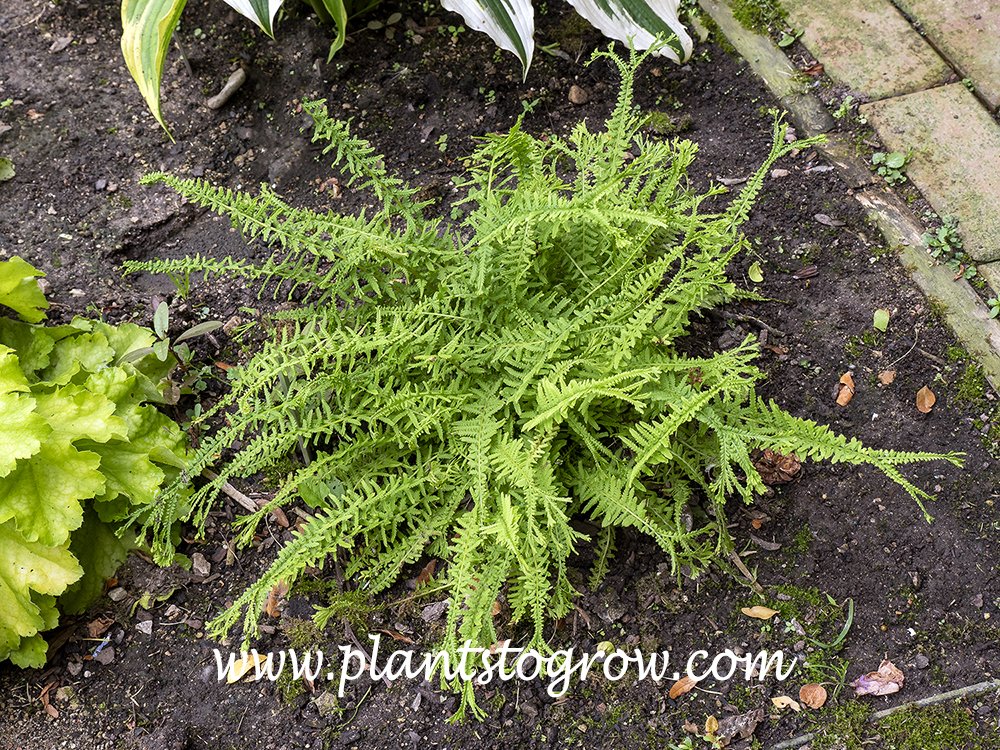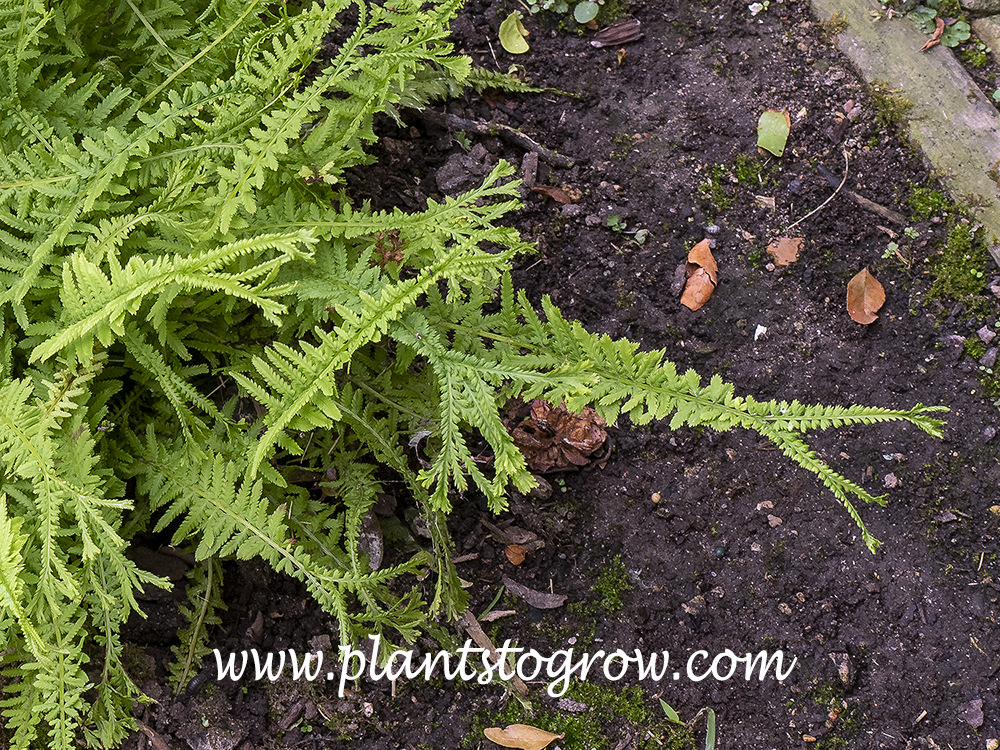| Description | Victoria Lady Fern (Athyrium filix-femina) is a large crested form of the Lady Fern. |
|---|---|
| Pronunciation | (ah-THEE-ree-um) |
| Plant Type | Ferns - Hardy |
| Hardiness Zone | 4-9 |
| Sunlight | shade to part sun, sunnier sites require a moisture soil |
| Moisture | average, moist |
| Soil & Site | average, moist |
| Flowers | Ferns do not produce flowers. They were around prior to the evolution of the flowering plants (angiosperms) |
| Leaves | pinnae criss-cross, forming a series of letter x’s on the frond, tip is crested forming drooping tassels of split tips. |
| Stems | rhizome |
| Dimensions | 18-24 x 20-24 inches or larger (HS) |
| Propagation | division, will not come true from spores |
| Cultivar Origin | Athyrium filix-femina ‘Victoriae’, the Victoria lady fern, was discovered in Scotland in 1861. |
| Misc Facts | The genus name Athyrium, from the Greek, a, "without" and qureos (thureos), "shield". The species filix-femina, from the Latin, "fern-feminine". This fern is variable in shape and form of leaves. Over 300 English forms have originated with this fern. |
| Author's Notes | Received a 5 out of 5 in the 2015 Athyrium comparative trails at the Chicago Botanic Gardens. |
| Notes & Reference | #80-A Field Guide to Ferns (Boughton Cobb) , #90-Ferns for American Gardens (John T Mickel), #203- North Creek Nursery (www.northcreeknurseries.com) |

Cart


